- drach09's home page
- Posts
- 2022
- 2020
- June (1)
- 2019
- 2018
- 2017
- 2016
- 2015
- 2014
- December (13)
- November (2)
- October (5)
- September (2)
- August (8)
- July (9)
- June (7)
- May (5)
- April (4)
- March (4)
- February (1)
- January (2)
- 2013
- December (2)
- November (8)
- October (5)
- September (12)
- August (5)
- July (2)
- June (3)
- May (4)
- April (8)
- March (10)
- February (9)
- January (11)
- 2012
- 2011
- October (1)
- My blog
- Post new blog entry
- All blogs
Run-11 Transverse Jets: Cut Optimization (Hadron Radius)
Here, I will show the result of attempting to optimize the cut on hadron ΔR. For this first attempt, I use only simulation. Thus, the estimates of the size of the resulting uncertainties are approximate and should be taken with a grain of salt.
Collins-like
Collins-like asymmetries are most relevant at low-pT and low-z (as far as we know). Thus, for the optimization, I look at the resolutions for 6 < pT,jet < 9.9 GeV/c in VPDMB and JP0 for 0.1 < z < 0.3.
Figure 1
| 6-7.1 GeV/c | 7.1-8.4 GeV/c | 8.4-9.9 GeV/c |
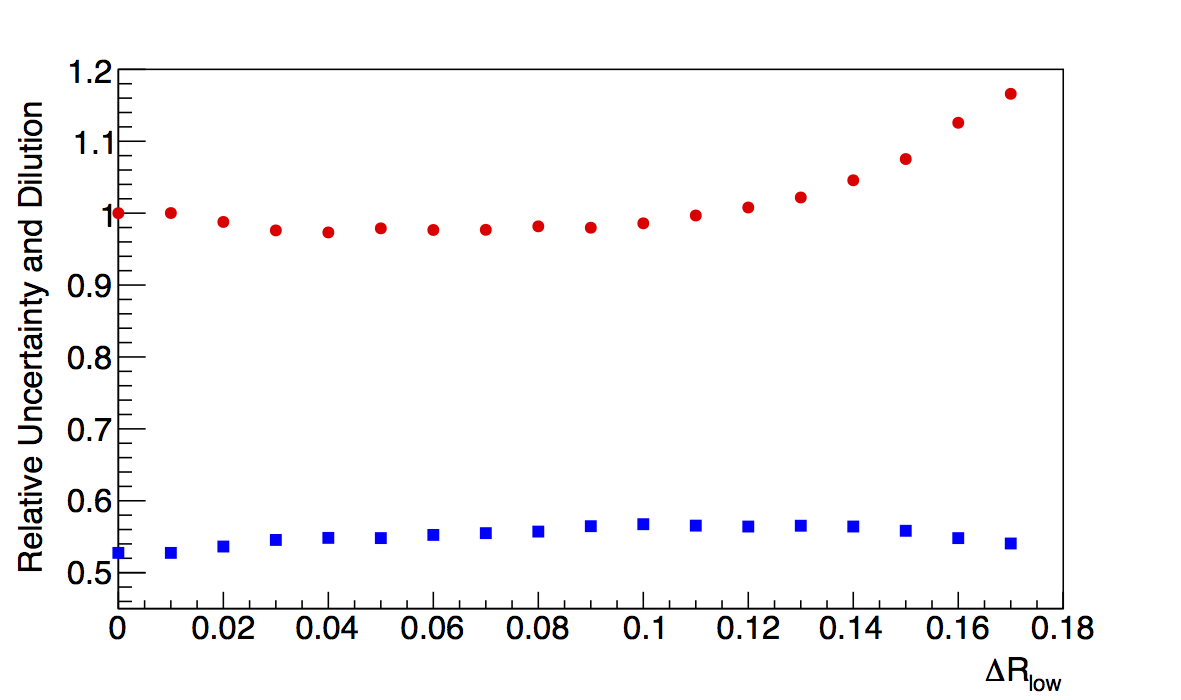 |
 |
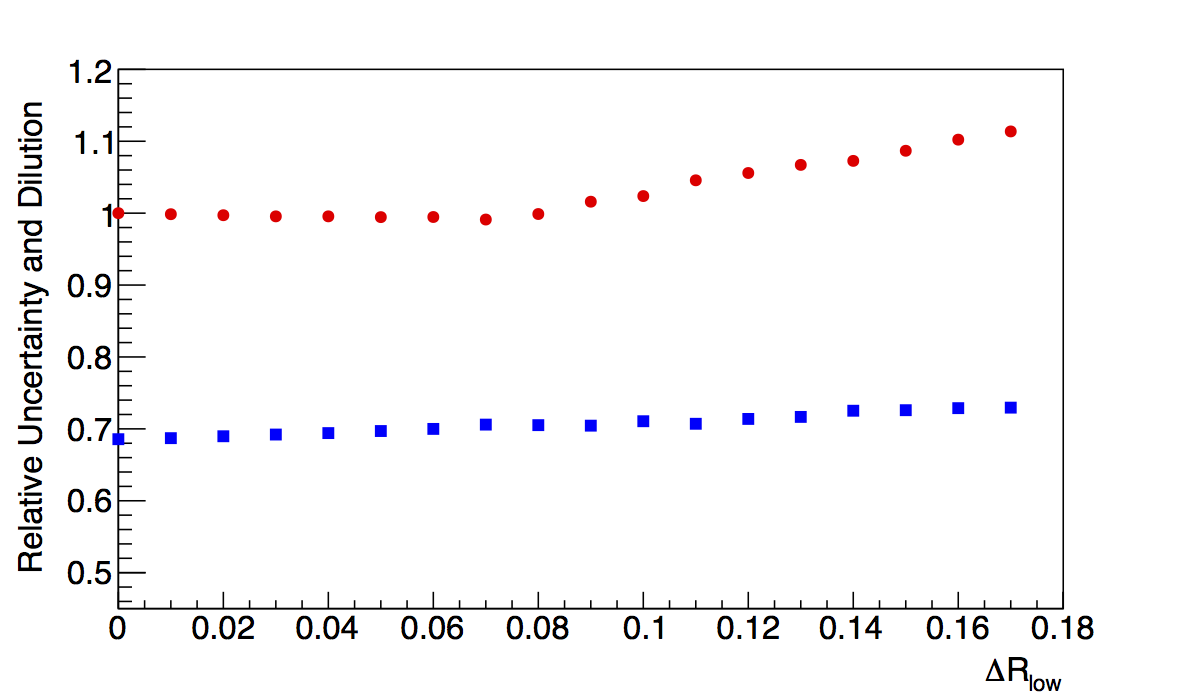 |
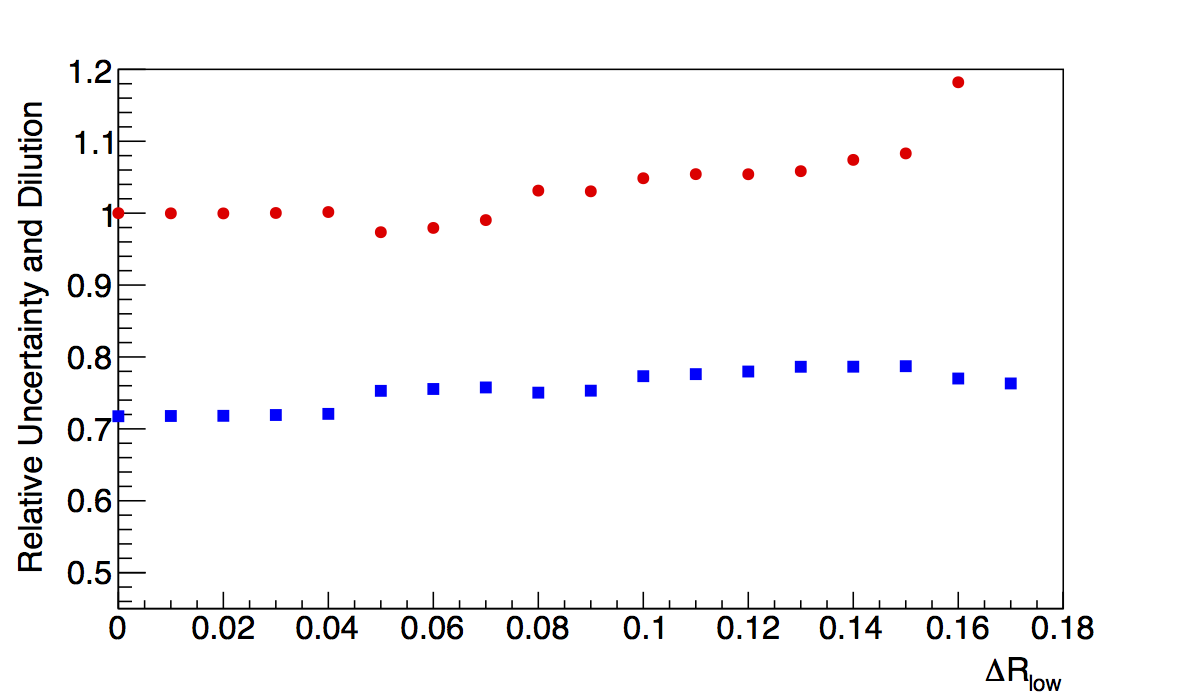 |
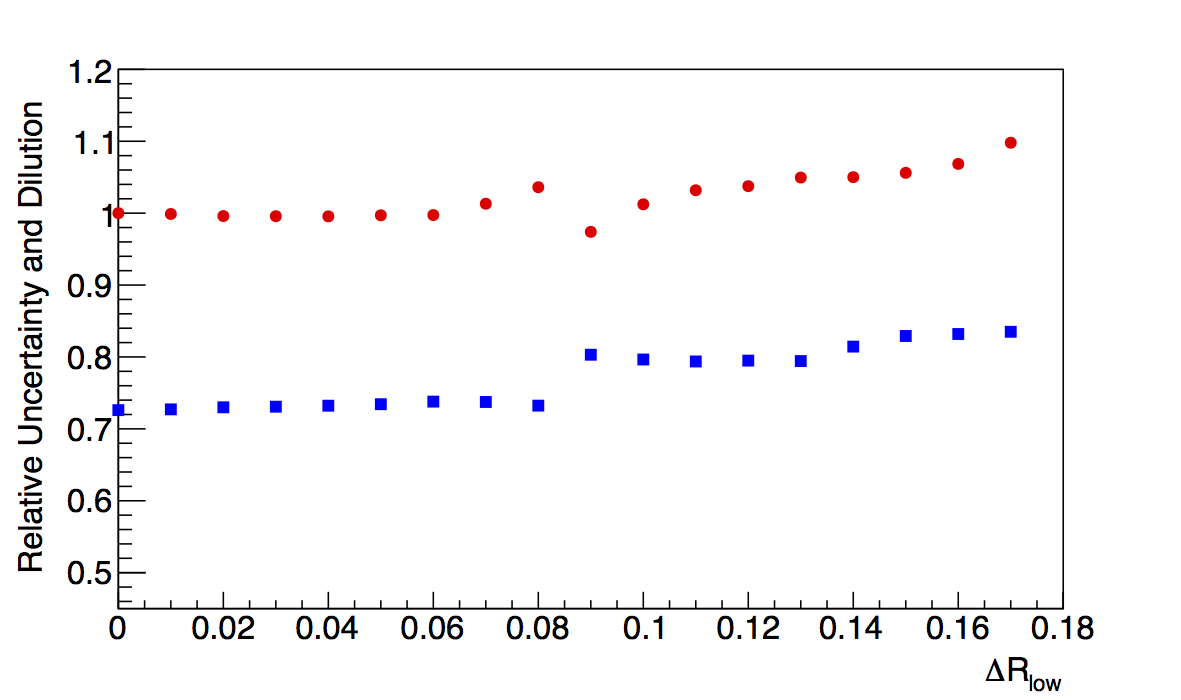 |
In Fig. 1 I show estimates of the relative uncertainty and the dilution due to finite φS-2φH resolution as a function of minimum hadron ΔR. Note: the relative uncertainty include a correction for the dilution. Specifically, the relative uncertainty is calculated via
and the dilution is estimated as the amplitude of the sinusoid resulting from convoluting the distribution of φCol-like,reco-φCol-like,true with a sinusoid of unit amplitude. For the relative uncertainty, the yields are estimate from simulation; and, thus, they may not be exact. Furthermore, fluctuations in the trends are likely due to finite simulation statistics.
From Fig. 1 it appears that the existing threshold of 0.1 is not unreasonable. The diultion does seem to improve as the ΔR cut is tightened, though, the improvement is relatively slow. The falling yield appears to compensate for the improvement in resolution, so that tightening the cut appears not to improve the overall uncertainties. ΔR = 0.1 appears to sit near the realistic mimum of the projected uncertainties. While loosening to ≈0.08 may gain statistics, I would tend to prefer the smaller correction and associated systematic (that will admittedly be quite small) in light of the relatively low payoff.
Collins
Collins asymmetries are most relevant at high-pT and high-z. Thus, for the optimization, I look at the resolutions for 16.3 < pT,jet < 26.8 GeV/c in JP1 and JP2 for z > 0.3.
Figure 2
| 16.3-19.2 GeV/c | 19.2-22.7 GeV/c | 22.7-26.8 GeV/c |
 |
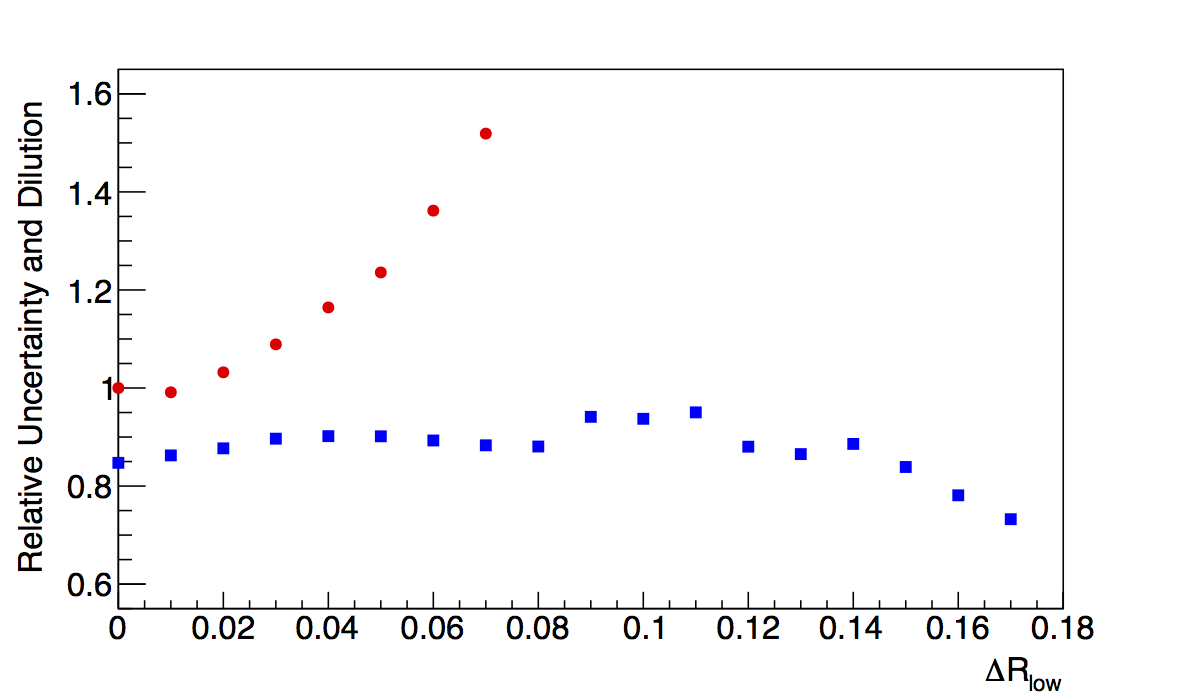 |
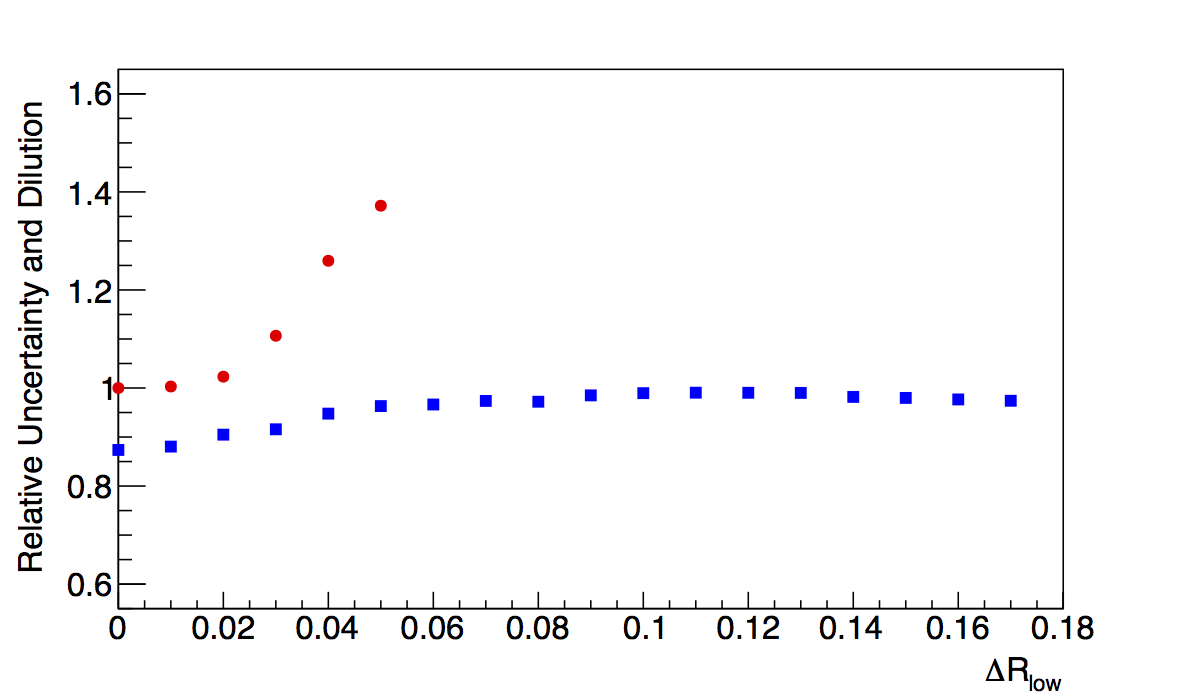 |
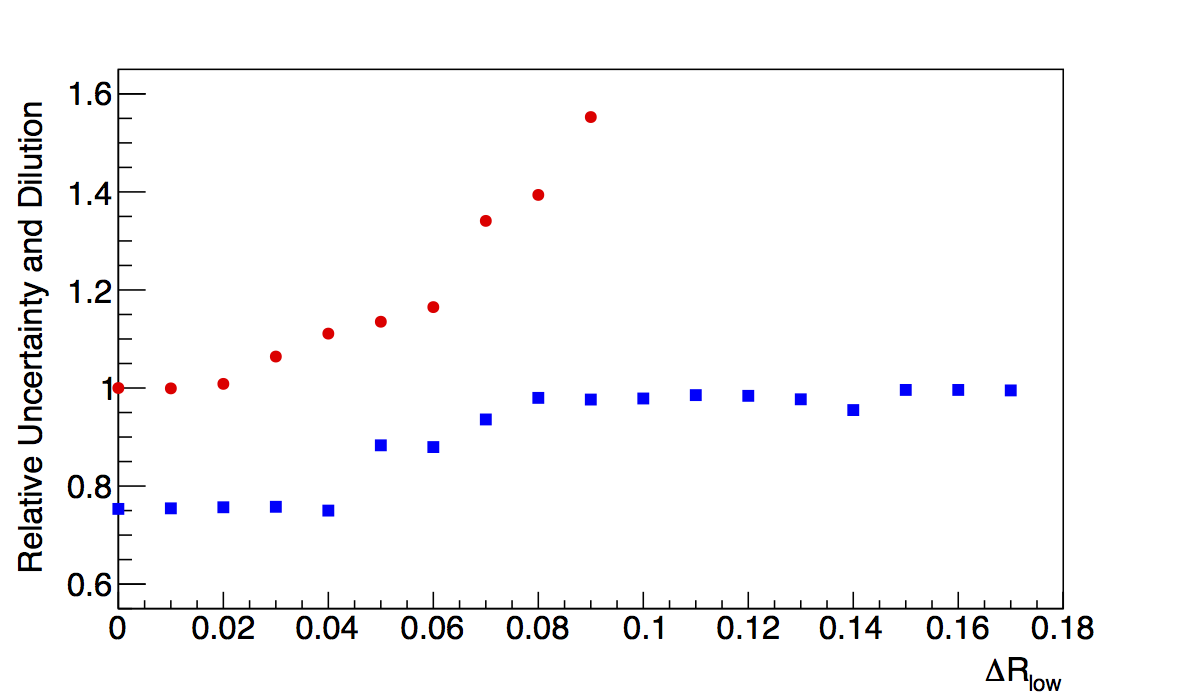 |
 |
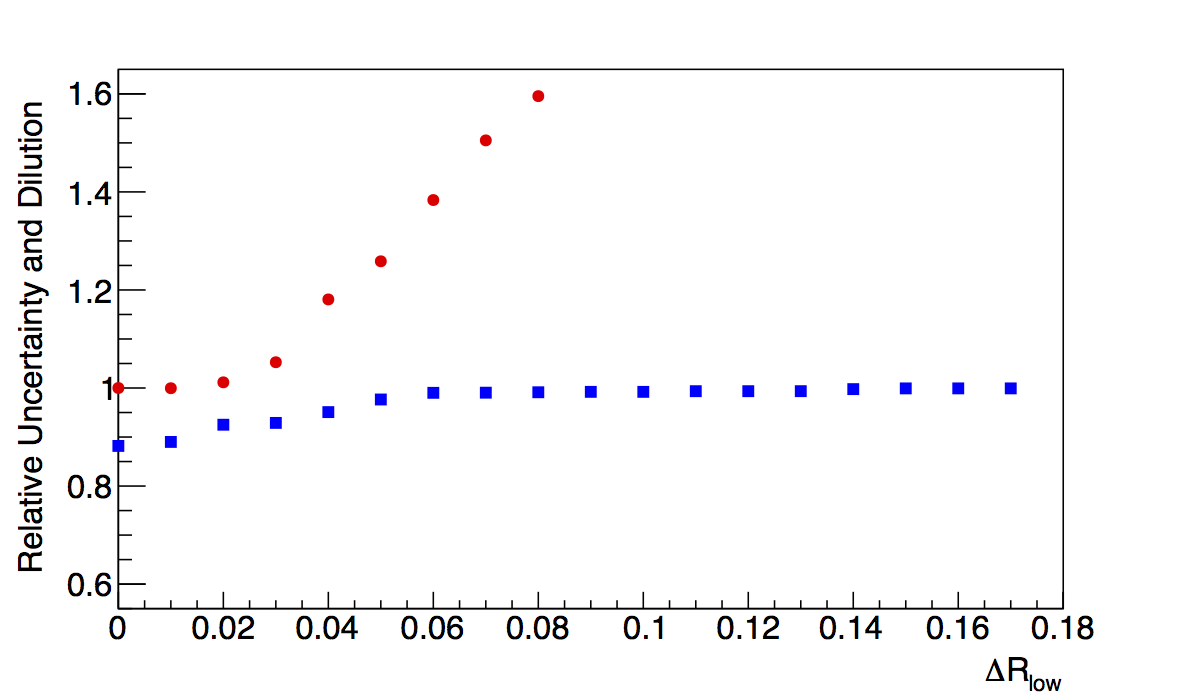 |
In Fig. 2 I show estimates of the relative uncertainty and the dilution due to finite φS-φH resolution as a function of minimum hadron ΔR. The relative uncertainties and dilutions are calculated as in the Collins-like case. In contrast to the Collins-like case, there appears to be a significant advantage to loosening the cut on ΔR. The high-z yield falls rather rapidly as the cut is tightened, while the effects from finite resolution are relatively constant. In many cases, the relative uncertainty at the current cut (ΔR = 0.1) is off the scale. Based on this study, I would propose to loosen the threshold to ΔR = 0.05 where the "cut-sample" uncertainty drops to around 20% or so of that of the "no-cut" sample and the resolution is still quite good.
Details
Figure 3: Collins-like Raw Distributions (VPDMB)
| ΔR > 0 | ΔR > 0.05 | ΔR > 0.1 |
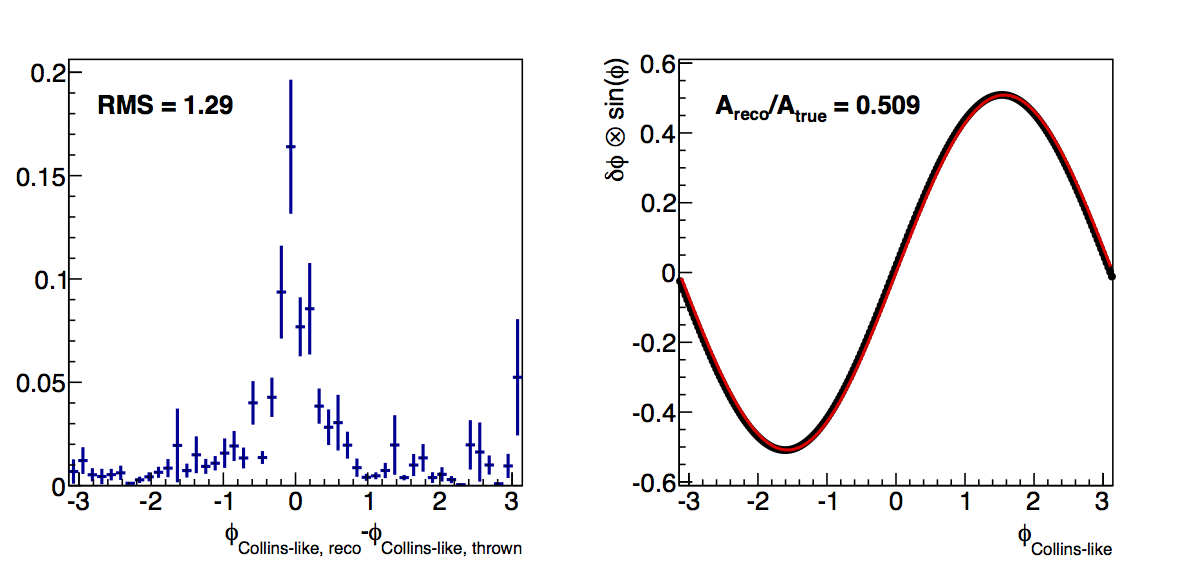 |
 |
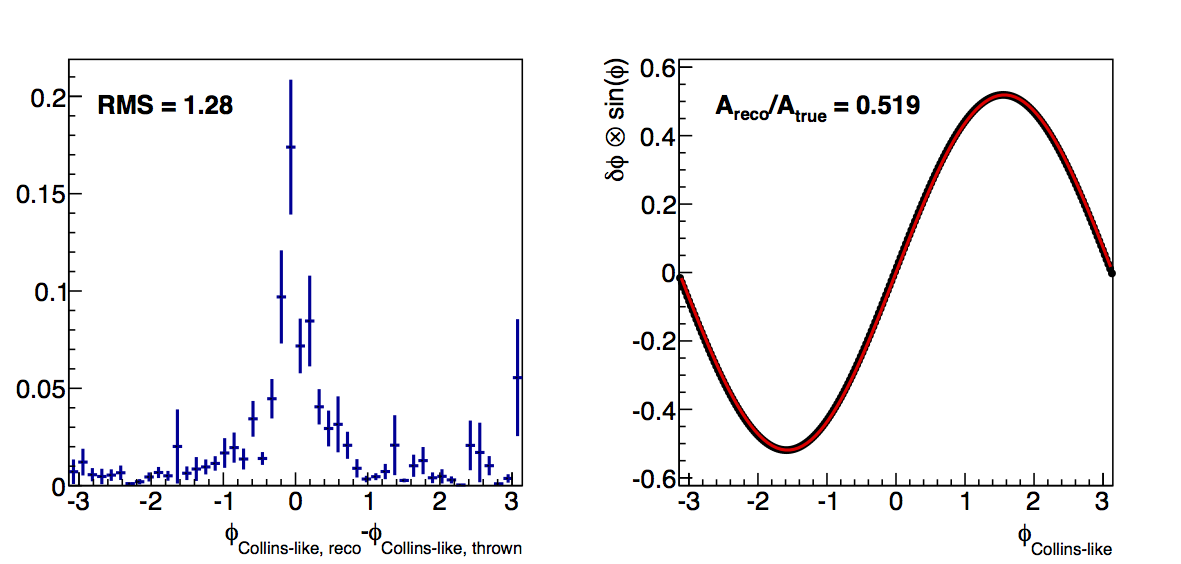 |
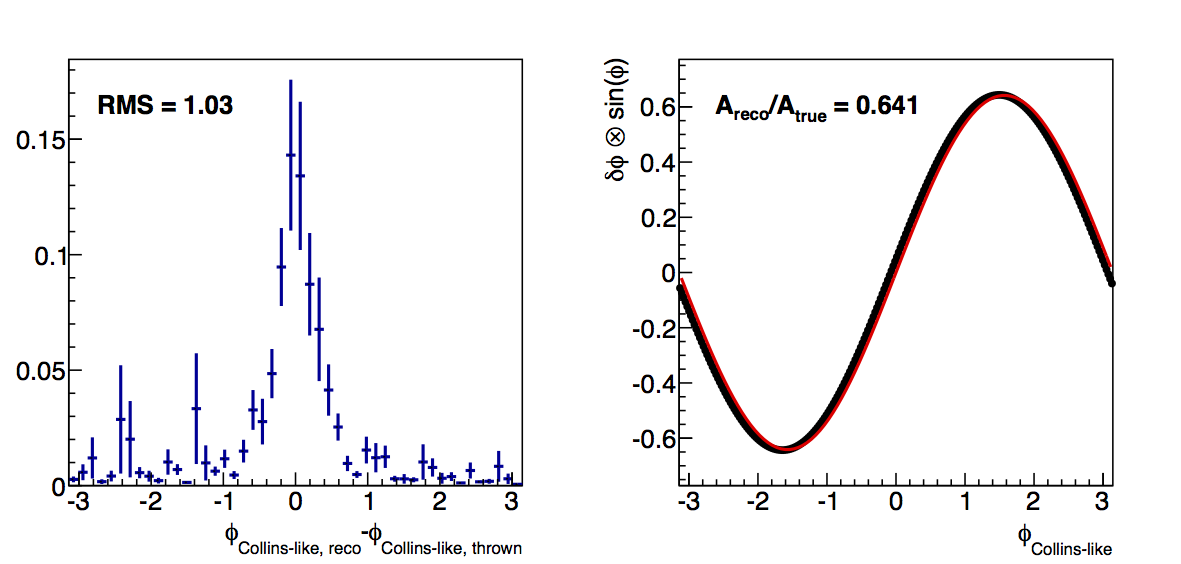 |
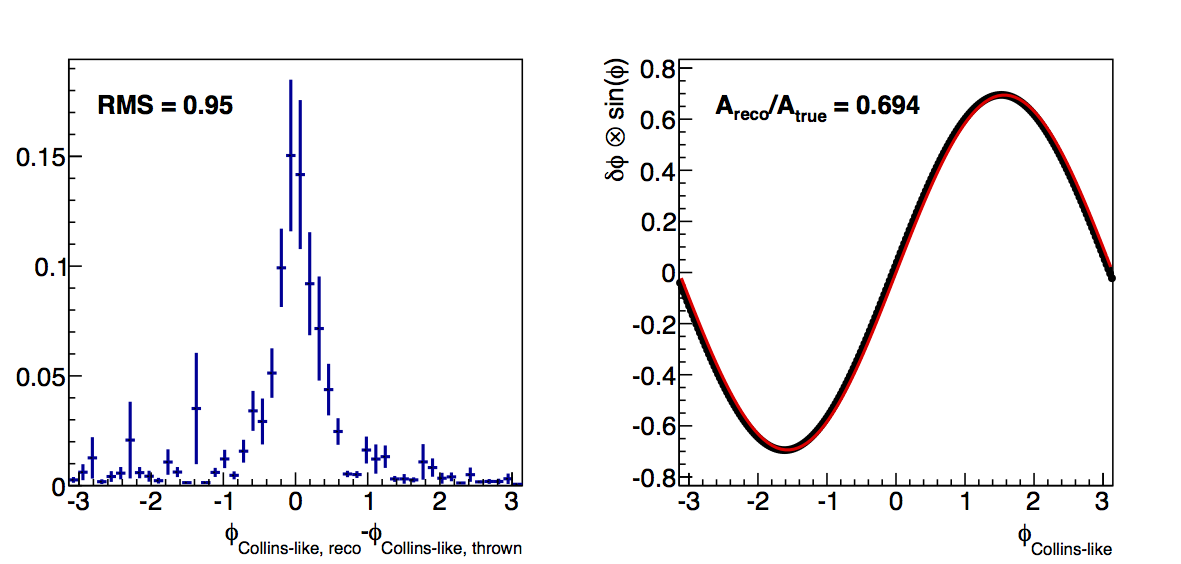 |
 |
The top row shows 6 < pT < 7.1 GeV/c; and the bottom row shows 7.1 < pT < 8.4 GeV/c, both for 0.1 < z < 0.3.
- drach09's blog
- Login or register to post comments
